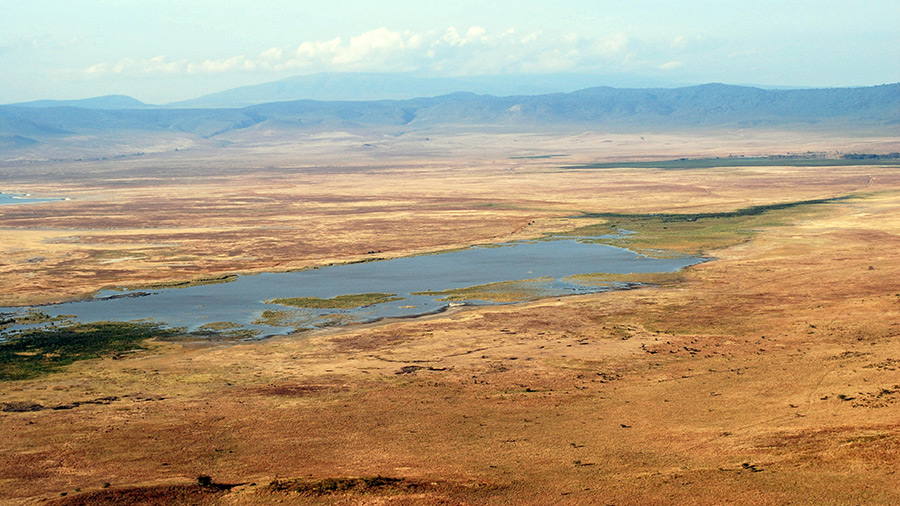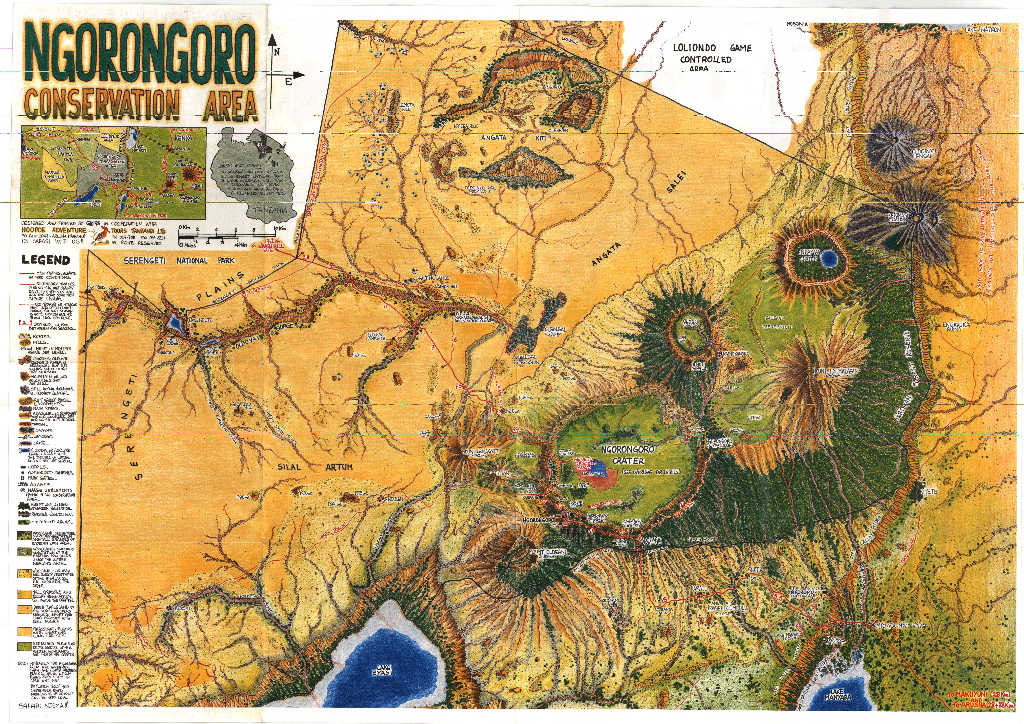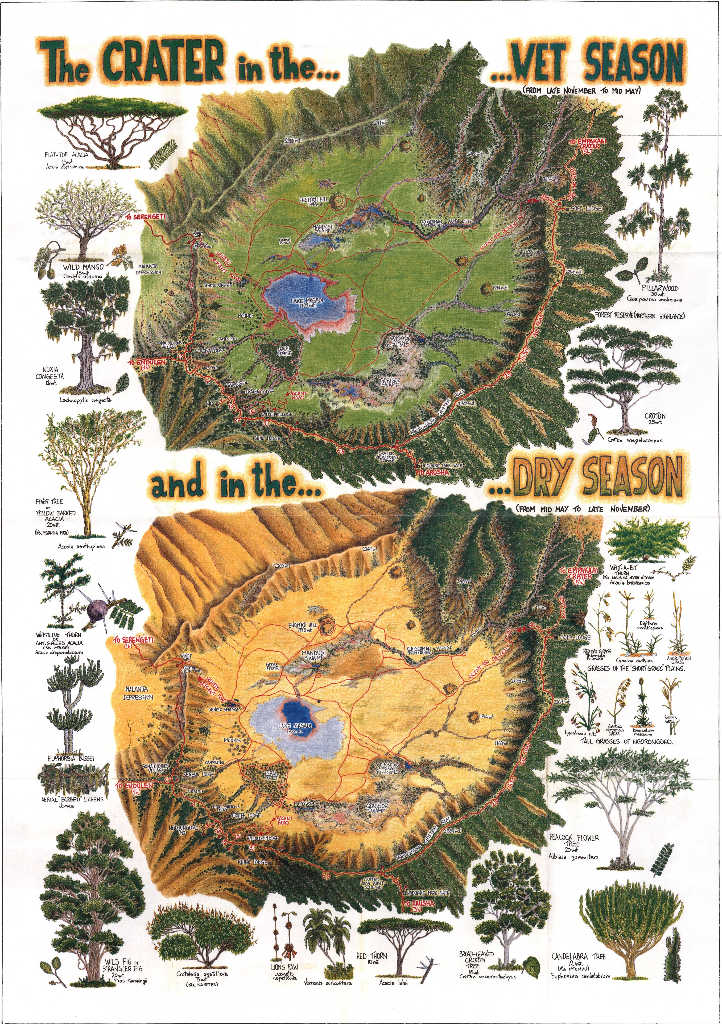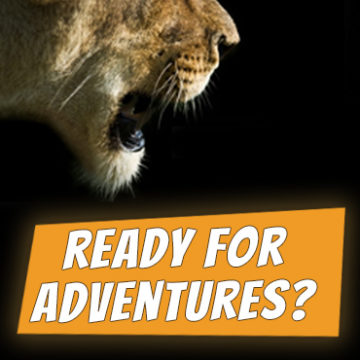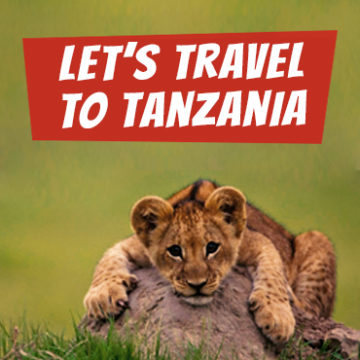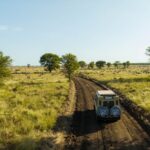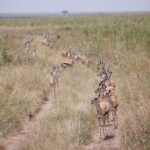Ngorongoro Conservation Area is an unforgettable destination during the safari in Tanzania due to the very high wildlife density and the best chance to spot all the Big Five.
Ngorongoro crater is located at 2200 meters above sea level, measures over 16 kilometers in diameter and occupies a total area of about 265 sq. km. It was formed over 2.5 million years ago due to the collapse of the now extinct and inactive volcano.
Inside the crater there are ideal conditions to survive and reproduce, there is plenty of water and food. Outside the crater, there are many animals around the forest, many elephants, buffaloes, baboons and leopards.
Ngorongoro Conservation Area is a protected area and home to a conservation project where the Maasai and their livestock live together with wild animals, coined in one concept called, the area with multiple land use.
In addition to the Ngorongoro crater, there are minor craters known as Empakai and Olmoti where we can experience natural walks with armed park rangers, a different activity than the game drive.
You can also visit Olduvai Gorge, one of the most famous archaeological sites in the world, where thanks to the work and research of the “Leakeys”, the remains of Australopithecus boisei were found.
The reserve is full of birds because here they can find water and food all over the year. Flamingos deserve special attention because they are one of the most numerous colonies in Africa.
Size: crater 265 sq km, 610 meters deep.
Location: Northern Tanzania, about 177 km from the town of Arusha to Loduare entry gate (main gate). Driving time is around 3 hours on good tamac road. The tarmac road ends at Loduare gate, you proceed on rough road for the rest of safari.
The entire area of the Ngorongoro Conservation Area has been declared a World Heritage Site and International Biosphere Reserve by UNESCO.
Ngorongoro Weather
There are two well-defined seasons in Ngorongoro Conservation Area which are dry and rainy. The dry season starts from late June to October/November and the rainy season starts from December to May with less to no rain in January and February.
Ngorongoro Activities
You will have a chance to experience a game drive to the floor of Ngorongoro Crater, visit Olmoti and Empakai crater, natural hiking with an armed ranger around the crater rim, visit the Maasai Cultural Boma and Olduvai Gorge museum and Laetoli footprint archaeological sites for the history of our human ancestors.
Ngorongoro Lodges and Camps
There are few accommodations within the Ngorongoro Conservation Area, because the carrying capacity of the crater rim cannot hold many lodges without affecting the conservation of natural resources.
The most spectacular facilities located on the crater rim are Ngorongoro Serena Lodge, Ngorongoro Sopa Lodge, Ngorongoro Wildlife Lodge and exclusive &Beyond Ngorongoro Crater.
There are also lodges and camps in the middle of the bush like Rhino Lodge.
Most of the accommodation facilities instead are located outside Ngorongoro in a small town called Karatu.
Camping inside Ngorongoro is possible at Simba campsite, but it is cold and humid at night so equip yourself with a fleece/sweater and a jacket for the cold evening and early morning.
Ngorongoro Map in Dry Season
On the map, we can see the 3 craters: the Ngorongoro crater, the Olmoti crater and the Empakai crater.
From June to October, temperatures in the afternoon are around 20-22 °C inside the crater. The sky is sunny during the day, it is often foggy in the early morning. It gets cold at night, we recommend a heavy jacket for game drives in the early morning.
During dry season you can easily spot wild animals because the vegetation is less dense and the animals aggregate around the water sources. July to September is the high season with many vehicles inside the crater every day.
The dry season is also the best time to visit the Olmoti crater or the Empakaai crater where you can experience a natural walk with Ngorongoro armed ranger.
Ngorongoro Crater Map in Wet Season
On the map, we can see Lake Magadi, Lerai forest and the picnic areas inside the famous crater.
During the rainy season from November to May everything is green. In this season temperatures range around 24-25 °C inside the crater, while night temperatures are around 6-10 °C at the crater edge (2000-2300 m).
Ngorongoro Crater offers excellent opportunities to spot wild animals even in the wet season, in a very green landscape. The rains are generally short afternoon thunderstorms and rarely interfere with your game drive. In April and May the lodges on the crater edge offer convenient discounted rates, it is a great opportunity to spend a night in the reserve with crater view.
All The Tanzania National Parks Maps
- Northern Circuit National Parks – this map includes all the parks
- Arusha National Park – you can experience nice walking safari
- Tarangire National Park – you can see teh biggest elephants
- Manyara National Park – the home of biodiversity
- Ngorongoro Conservation Area – the highest wildlife density all over Africa
- Serengeti National Park – the endless plain
Ngorongoro Safari
All the safari programs include Ngorongoro crater, it’s amazing place you can’t miss during your Tanzania trip, you can visit the crater and overnight at the crater rim with amazing crater view or you can proceed to Karatu where there are a lot of different lodges. You can also visit a Maasai boma inside Ngorongoro Conservation Area as well as Olduvai Gorge and its museum, one of the most important archeological sites in the world .
Here is some safari programs which include Ngorongoro crater visit:
We can customize and tailor made your safari in Tanzania, contact us at
- info@savannahexplorers.com
- Whatsapp +255 765 972 458

